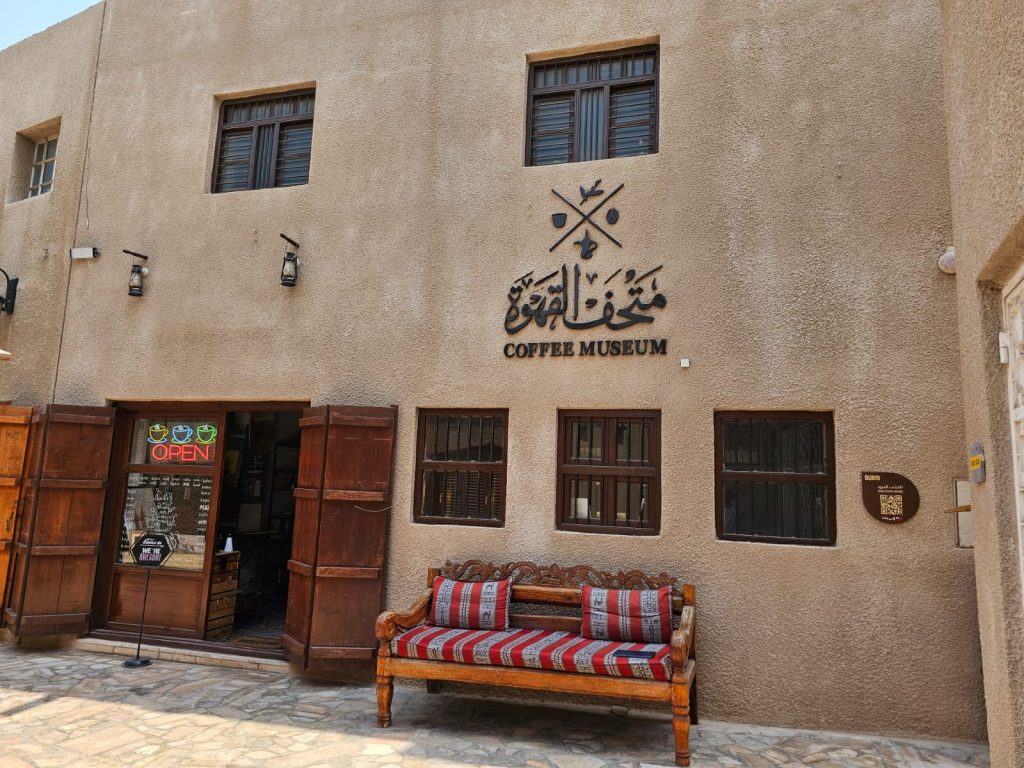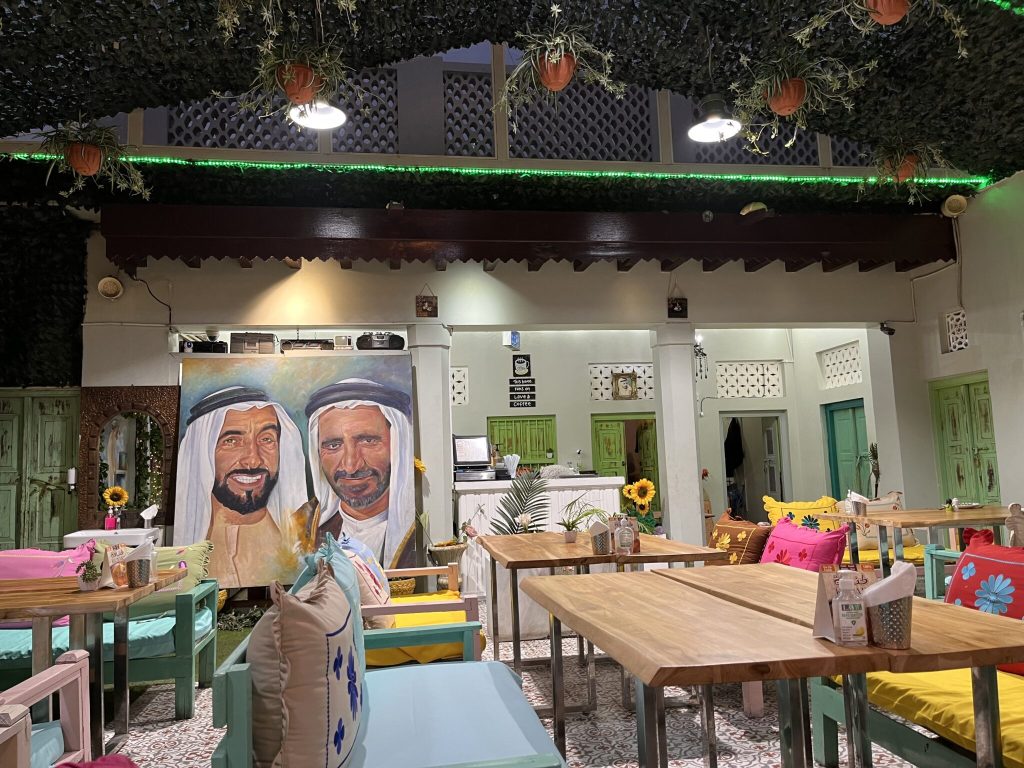Why does stepping into Al Fahidi District feel like uncovering a secret diary of Dubai? While skyscrapers dominate the skyline, this labyrinth of wind towers and coral-stone walls whispers tales of pearl divers and Bedouin traders. Let’s wander through its alleys—where every corner hides a story, a sip of cardamom coffee, or a artisan’s workshop frozen in time.
AL FAHIDI HISTORIC NEIGHBOURHOOD
Where Time Stands Still
The Al Fahidi Historic Neighbourhood, dating back to the 1890s, is Dubai’s oldest surviving residential area. Its narrow lanes are lined with restored merchant houses featuring barjeel (wind towers) that predate electric cooling. Free to explore, the area hosts art galleries like Majlis Gallery and quirky museums. Pro tip: Visit early morning to avoid crowds and capture golden-hour photos. Turkish visitors often compare its intimate scale to Istanbul’s Balat district.
DUBAI MUSEUM
A Fortress of Stories
Housed in Al Fahidi Fort (1787), Dubai Museum offers a deep dive into the emirate’s transformation. Entry costs AED 3 (less than a coffee!), and dioramas depict scenes from souks to desert life. Don’t miss the underground gallery showcasing 4,000-year-old archaeological finds. Insider note: The fort’s cannon towers were once vital for defending the creek. According to the www.few.ae editor, visitor numbers surged by 30% post-2020 renovations.
COFFEE MUSEUM
From Bean to Brew Across Centuries
This tiny gem traces coffee’s journey from Ethiopian highlands to Arabian gahwa rituals. Smell roasted beans from Yemen, Brazil, and Turkey—where Ottoman-style cezves (copper pots) take center stage. Tasting sessions cost AED 15, and the courtyard is perfect for sipping. Fun fact: Turkish coffee here is brewed with cardamom, just like in Istanbul’s Grand Bazaar.

SHEIKH MOHAMMED CENTRE FOR CULTURAL UNDERSTANDING
Breaking Bread, Building Bridges
At this cultural hub, Emirati hosts answer questions over machboos (spiced rice dish) during open lunches (AED 90). Weekly heritage tours (AED 45) decode local customs, like why camels are dubbed “ships of the desert.” Turkish travelers appreciate its focus on intercultural dialogue—reminiscent of Ankara’s Ethnography Museum.
TEXTILE SOUK
A Kaleidoscope of Fabrics
A 10-minute walk from Al Fahidi, this souk overflows with silk, pashmina, and kanduras (traditional robes). Haggling is expected—vendors quote 40% above fair prices. Look for Turkish-inspired kilim rugs; some are woven in Gaziantep. Need a tailor? Stalls here stitch custom outfits in 24 hours for AED 120+.
XVA GALLERY
Art in the Shadows of History
Housed in a 19th-century merchant’s home, XVA showcases contemporary Middle Eastern art. The courtyard café serves rosewater lemonade and vegan date cake—ideal for refueling. Exhibitions rotate quarterly, and pieces by Turkish artist Ahmet Güneştekin have graced its walls.
AL SEEF DISTRICT
Where Old Meets Instagrammable
Stretching along Dubai Creek, Al Seef mimics a 1950s fishing village with modern twists. Turkish architects consulted on its mud-walled shops and wooden lattices. Stay at the Heritage Hotel (AED 400/night) for lantern-lit rooms. Nightly oud players add atmosphere, and the Dubai Ferry stops here (AED 50 ride).
ABRA RIDES
Crossing the Creek Like a Trader
For AED 1, wooden abras ferry passengers to Deira’s spice souk. Sunset rides are magical—watch dhows load saffron and Omani halwa. Upgrade to a private abra (AED 100/hour) for creek photography sans crowds.
LOCAL EATERIES
Bites of Heritage
At Arabian Tea House, try regag (Emirati crispy bread) with cheese (AED 22). Nearby, Bayt Al Wakeel—Dubai’s first licensed restaurant (1935)—serves grilled hammour (AED 65) on a creek-facing terrace. Turkish foodies liken its ambiance to Antalya’s harbor-side meyhanes.

HERITAGE TOURS
Walking with the Past
Guided walks (AED 120) reveal hidden gems, like the 1920s Al Khayma House, now a calligraphy studio. Guides share tales of pearl diving’s risks—divers risked shark bites for 6 months at sea. The www.few.ae editor notes these tours book up a week in advance during winter.
HIDDEN COURTYARDS
Secrets Behind the Walls
Many Al Fahidi homes have interior courtyards for social gatherings. Peek into Bait Al Waquaa (open Sundays), where date-palm beams support ceilings. Turkish design buffs admire its similarity to Safranbolu’s Ottoman houses.
CULTURAL ETIQUETTE
Respect in the Ruins
Dress modestly—shoulders and knees covered. Ask permission before photographing locals. During Ramadan, avoid eating publicly until sunset. Free iftar meals are offered at Al Farooq Omar Bin Khattab Mosque (5-minute walk).
ARTISAN WORKSHOPS
Crafts That Defy Time
Watch potters shape clay without wheels at House of Ceramics (free entry). At Sikkat Al Khail, blacksmiths forge khanjars (daggers) using techniques unchanged for centuries. Workshops sometimes accept custom orders.
SEASONAL TIPS
Beating the Heat, Catching the Breeze
Summer visits? Start at 8 AM and retreat indoors by noon. Winter nights (Nov–Mar) host the Sikka Art Festival, lighting up alleys with installations. Turkish tourists often combine Al Fahidi with a desert safari—agencies offer combo deals.
TRANSPORT HACKS
Parking, Metro, and More
Parking’s scarce—use Al Fahidi Metro Station (10-minute walk). Taxis cost AED 15 from Downtown Dubai. Abras connect to Deira for spice souk sprees.
THE UNFILTERED TRUTH
Al Fahidi’s Quiet Rebellion
In a city obsessed with futurity, Al Fahidi clings to its soul. It’s not polished or perfect—plaster peels, cats nap in shaded corners, and some galleries close unpredictably. But that’s its charm. As the www.few.ae editor quips, “Here, even the shadows have history.”


 then "Add to Home Screen"
then "Add to Home Screen"